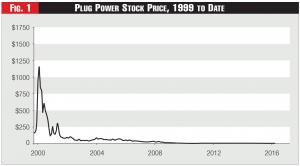A year later, reality is kicking in.
Steve Huntoon is the principal of Energy Counsel, LLP. Mr. Huntoon is a former President of the Energy Bar Association, and for over 30 years of practice in energy regulatory law he has advised and represented such companies and institutions as Dynegy, PECO Energy (now part of Exelon), Florida Power & Light (NextEra Energy), ISO New England, Entergy, PacifiCorp, Williston Basin (MDU Resources) and Conectiv (now part of PHI).
It was a year ago. With hype worthy of The Donald, Elon Musk rolled out the Powerwall, Tesla's home battery.

At the time of the roll out, there were a few lonely voices pointing out the emperor had no clothes.1 The daily cycling version made no economic sense, either on a stand-alone basis or in association with solar. Especially where net metering provides storage for free.
The backup version had maximum output of two kilowatts - basically, a hair dryer's demand. And it was hugely more expensive than Honda or Generac equivalents, which can run indefinitely instead of just several hours.2
But these lonely voices were no match for the Musk megaphone. Soon after the roll-out, Musk announced that, with reservations of 38,000 units, production was "sold out" through mid-2016. Installations, he added, would begin in October. Notably, of last year.
So surely you've seen Powerwalls decorating homes throughout your neighborhood. No? Come to think of it, neither have I. The 38,000 "sales" were just expressions of interest - driven by the hype - that took a few keystrokes at the Powerwall webpage.
 Figure 1 - Plug Power Stock Price, 1999 to Date
Figure 1 - Plug Power Stock Price, 1999 to Date
It's a year later. What do we know?
A few Powerwalls have been shipped to Germany and Australia. From foreign press reports, a handful (yes, I mean about five) have actually been installed. None in the U.S. so far. Although Green Mountain Power may soon install ten freebies as part of a pilot.
The huge announced cost of the Powerwall has gotten more so. Musk said prices would be $3,000, and $3,500, for the seven kilowatt-hour daily cycling version, and ten kilowatt-hour backup version, respectively. Plus $500 for installation.
Musk: "... the net result is we're expecting people to be able to purchase and install the Powerwall for about $4,000."
 “If payback periods are that bad in Australia, where the average utility rate is around 23 cents/kWh, imagine how bad they are in the States.” – Steve Huntoon
“If payback periods are that bad in Australia, where the average utility rate is around 23 cents/kWh, imagine how bad they are in the States.” – Steve Huntoon
We now have a couple real price points:
- U.S. installed price of $6,501, Green Mountain Power
- Aussie installed price of $7,100, Natural Solar (converting $9,500 in Australian dollars).
Whoops, the real price is 60 to 80 percent more than Musk claimed.
And that's for one Powerwall. In the backup version for big U.S. homes - probably the market segment most likely to have money to burn on the Powerwall - you'd need six Powerwalls. Compare an installed cost of roughly $30,000 for these Powerwalls with an installed Generac cost of $10,000 for equivalent backup capacity. And the Generac will run indefinitely, not just several hours!
Meanwhile, in Australia, the daily cycling version is being promoted, due to high Aussie utility rates. The "payback" period ranges from 18 to 26 years, depending upon configuration.3
With the time value of money, and the risks and hassles of any product, payback periods beyond five to seven years make no sense. And if the payback periods are that bad in Australia, where the average utility rate is around 23 cents per kilowatt-hour, imagine how bad they are in the States, where the average utility rate is 12 to 13 cents per kilowatt-hour.
By the way, these payback periods assume zero capacity degradation. The terms of the Powerwall warranty were not provided until earlier this year. And - guess what? - the degradation warranty is for 60 percent energy retention at the end of the ten-year warranty period. So the seven kilowatt-hour version (now downgraded to 6.4 kWh, but who's counting) can be expected to steadily degrade, down to four kilowatt-hours at year ten when the warranty ends.
Of course, there are early-adapter fashionistas who will buy anything - sometimes even more if the price is higher. (Economists refer to such counter-intuitive purchases as Veblen goods.)
But the Powerwall isn't going into the garage next to your Tesla. It's going into the basement by the circuit breaker, next to the old toilet parts.
As for the green claim by Musk, it is true that the Powerwall, in combination with solar panels, can increase usable solar generation. But that combination value exists only when net metering doesn't provide storage for free.
When the Powerwall stands alone, the generation plants running at night to charge the Powerwall will tend towards the coal variety - not green! And, don't forget the efficiency loss of more than ten percent from the round trip through the battery and inverter - not green!
And here's the latest twist: The ten kilowatt-hour backup version went missing from the Powerwall webpage in March. Tesla later admitted that it had been entirely abandoned. No glitzy Musk event for that news.
So it's now only the seven kilowatt-hours (oops, 6.4 kWh) version for daily cycling. But the Powerwall website still promotes "Emergency Backup" - a use severely compromised by a battery spending most of its time partially or fully discharged as it goes through its daily cycling routine. Go figure.
The Powerwall has a precursor in home energy storage: The Plug Power fuel cell from the end of the last millennium. Perhaps you remember. Particularly if you bought the stock whose history is shown in Figure 1. Ouch!
Endnotes:
1. The few lonely voices included yours truly: http://www.fortnightly.com/fortnightly/old-musk-magic
2. Musk later announced that the maximum output of the Powerwall had been increased to 3.3 kilowatts (a clothes dryer's demand). But that only came at the expense of reducing the hours of backup.
3. http://www.gizmodo.com.au/2016/01/tesla-powerwall-number-crunching-prici...



